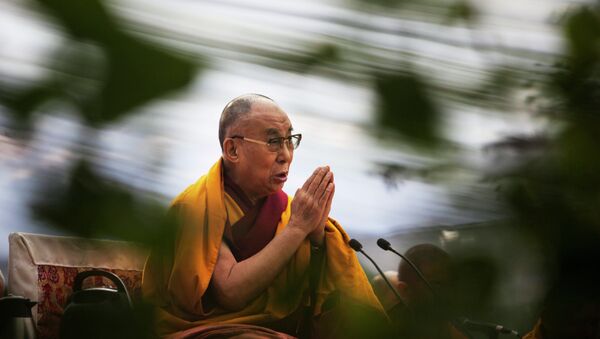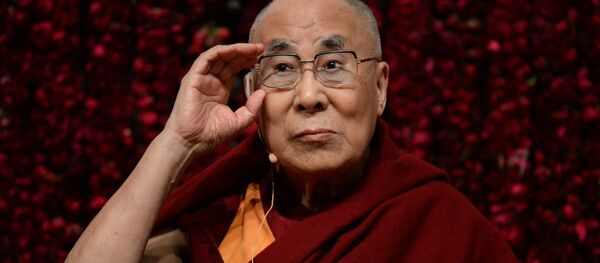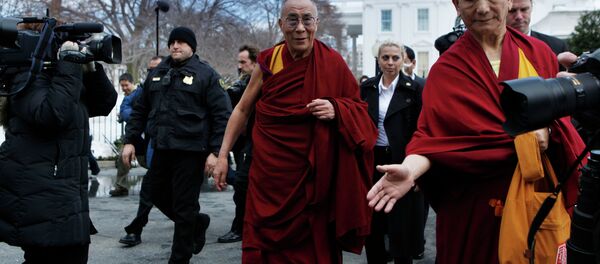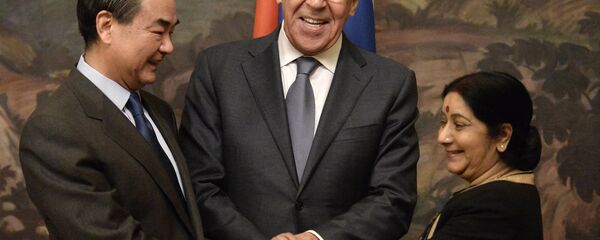China and India, on paper at least, are very close partners. Both Asian Giants are members of BRICS, and the latter in poised to officially enter the SCO later this year. Trade between the two is growing, and most outside observers agree that the stability of the Indo-Pacific Century will largely hinge on the state of relations between Beijing and New Delhi. It’s in Eurasia’s best interests for China and India to deepen their existing institutional partnerships and expand them to new domains, yet this isn’t what’s actually happening.
Quite clearly, what’s urgently needed at this point in time is a sober analysis which attempts to figure out what’s really going on right now between China and India, hence the reason for this article. The analysis begins with the reasons why these two have drifted so far apart over the past couple of years, and then moves along to discussing how their reinvigorated rivalry has reverberated across the shared Himalayan border region. Once that’s done, the last part of the work attempts to forecast the future trajectory of their bilateral relations in light of the Chinese Foreign Ministry’s stringent opposition to the Dalai Lama’s trip.
Ancient Neighbors, Recent Rivals
The Imperial Era:
The Yellow and Ganges River civilizations, from which modern-day China and India owe their heritages, never fought a war against one another in their multi-millennial-long history until their 1962 border conflict. That event owes its genesis to the UK’s colonial-era cunningness in the early 20th century whereby London attempted to impose the so-called “McMahon Line” on China as per the controversial “Simla Accord” of 1914 (which Beijing doesn’t recognize).
The context is that Tibet, which had historically been under Chinese sovereignty, was the focus of British imperial expansionism in the dying days of the Qing Dynasty, and India’s occupiers sought to enlarge their area of control by annexing this province’s southern regions in spite of Beijing’s objections, though exploiting the fact that the Chinese authorities were much too weak to do anything about it.
The Cold War:
The issue remained dormant for a few decades until after India’s independence in 1947, when China attempted to resolve this dispute with its now-sovereign neighbor. The Dalai Lama, who is rightly seen by Beijing as being a CIA-backed militant separatist, fled the People’s Republic in 1959 and sought refuge in India after crossing the “McMahon Line”, where he was warmly welcomed by New Delhi and granted asylum.
It was at this time when China decided to accelerate its diplomatic engagement with India in order to resolve their mutual border dispute and forestall any further deterioration in their ties, but much to the surprise of those who actually believed every single word of India’s anti-imperialist rhetoric all throughout the Cold War, New Delhi insisted on retaining the UK’s colonial boundary line. This was unacceptable for China, and the two sides eventually went to war over the issue in October 1962.
Recent History:
India and China aren’t Israel and Syria, however, and unlike the two Mideast rivals, these Asian ones were able to enter into pragmatic cooperation with one another in spite of their unresolved territorial issues.
China, sensing Indian ambivalence towards OBOR and eager to strengthen its high-level comprehensive strategic partnership with Pakistan, unveiled the $46 billion China-Pakistan Economic Corridor (CPEC) in 2015 during President Xi’s visit to the South Asian country. Once completed and fully operational, this game-changing strategic project will provide China with direct and reliable non-Malacca access to the Indian Ocean, thereby facilitating its trade with the EU and the South-South regions of the Mideast and East Africa.
These arguments in turn influenced the Indian elite to perceive of CPEC as contributing to its “security dilemma” with China, which made it easier for New Delhi to become a de-facto American ally by agreeing to a military-strategic partnership (LEMOA) with the US in 2016. This wasn’t positively received by China and Pakistan, which interpreted the move as obviously being aimed against them.
Still, there remained a faint glimmer of hope that India might change its mind and cooperate on OBOR as a means of rebooting its strained relations with its two nuclear-armed neighbors, but this wishful thinking was finally dashed when the country’s Defense Ministry forcefully came out against CPEC – and by inferred extension, the OBOR project of which it’s the flagship – in mid-March on the grounds that it “challenges Indian sovereignty”.
Accordingly, India will likely not attend a major Belt and Road Summit organized by China in May, signaling just how frosty relations have become as of late between these two nominal BRICS and SCO “partners”.
Himalayan Hotspots
The visibly worsening political relations between India and China run the very real risk of destabilizing the shared Himalayan border region between them. Here are the four main areas where both sides have important interests:
* Tibet:
* “Arunachal Pradesh”/”South Tibet”:
Aside from the political-diplomatic history of this contested territory, there are also very real geopolitical interests at play due to its physical location. India views “Arunachal Pradesh” as its ‘stepping stone’ for influencing Tibetan affairs (mostly through Tawang and the Buddhist religion), whereas China sees “South Tibet” as a corridor for socio-economic engagement with India’s Northeastern pivot state of Assam.
* Nepal:
Long thought of as being within India’s exclusive sphere of influence, this former Hindu Kingdom decisively moved closer to China after New Delhi was accused of “blockading” the country in fall 2015 out of solidarity with the southern plains-residing Indian-descended Nepalese (“Madhesis”) who were violently protesting against the new Federal Constitution.
China unveiled an ambitious proposal two years ago to connect Nepal to OBOR via a high-speed railway running underneath Mount Everest, which could eventually link Tibet to India’s largest province (and market) of Uttar Pradesh and even the maritime port of West Bengal’s Kolkata, though given New Delhi’s existing stand against OBOR, it can be surmised that India would rather see these plans fail.
*Kashmir:
The Day After Tawang
The Indian government’s hosting of the Dalai Lama in Chinese-contested Tawang is bound to have consequences for the bilateral relationship between both Asian Great Powers, and here’s what it might be expected to lead to in the coming future:
Institutional Instability:
The diverging grand strategic trajectories of India and China could inevitably impact the efficiency of their working cooperation within BRICS and the SCO. This is especially the case when considering how Beijing’s recently proposed “BRICS Plus” format could possibly include Pakistan, something which is a red line for New Delhi. China hosts this year’s BRICS gathering, however, so it’s at liberty to interpret one of its self-professed key priorities of “building broader partnerships” in this manner, which could have the effect of India progressively disengaging from this multipolar bloc in response.
Playing The Spoiler:
India’s in a lot more advantageous of a position than China is to spoil its rival’s geopolitical plans, and whether unilaterally or in covert conjunction with its new American ally, it could do so by:
* encouraging the Dalai Lama to possibly incite another period of riotous unrest in Tibet;
* remaining intransigent in resolving the dispute over “Arunachal Pradesh”/”South Tibet” and continue moving offensive military equipment there;
* signaling to the “Madhesis” that New Delhi will back them up with a (second?) “blockade” if they violently protest again;
* and supporting anti-state elements in the Pakistani region of Gilgit-Baltistan;
Moscow’s Mediation:
The views expressed in this article are solely those of the author and do not necessarily reflect the official position of Sputnik.












